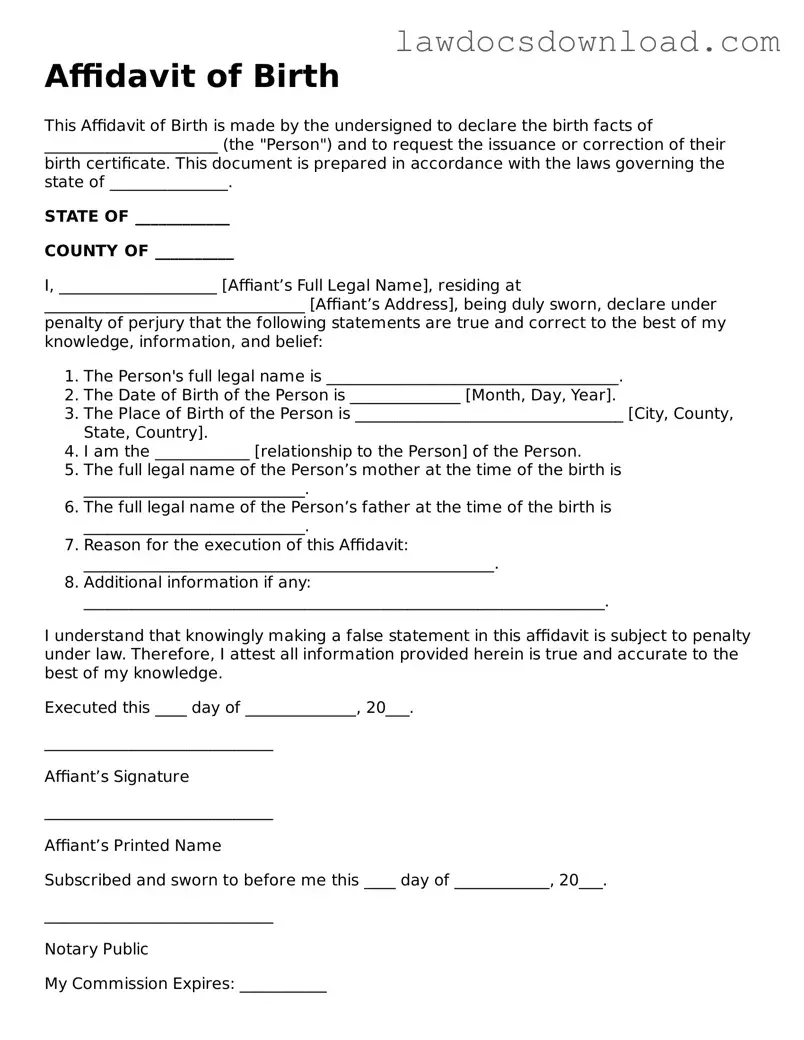Affidavit of Birth
This Affidavit of Birth is made by the undersigned to declare the birth facts of ______________________ (the "Person") and to request the issuance or correction of their birth certificate. This document is prepared in accordance with the laws governing the state of _______________.
STATE OF ____________
COUNTY OF __________
I, ____________________ [Affiant’s Full Legal Name], residing at _________________________________ [Affiant’s Address], being duly sworn, declare under penalty of perjury that the following statements are true and correct to the best of my knowledge, information, and belief:
- The Person's full legal name is _____________________________________.
- The Date of Birth of the Person is ______________ [Month, Day, Year].
- The Place of Birth of the Person is __________________________________ [City, County, State, Country].
- I am the ____________ [relationship to the Person] of the Person.
- The full legal name of the Person’s mother at the time of the birth is ____________________________.
- The full legal name of the Person’s father at the time of the birth is ____________________________.
- Reason for the execution of this Affidavit: ____________________________________________________.
- Additional information if any: __________________________________________________________________.
I understand that knowingly making a false statement in this affidavit is subject to penalty under law. Therefore, I attest all information provided herein is true and accurate to the best of my knowledge.
Executed this ____ day of ______________, 20___.
_____________________________
Affiant’s Signature
_____________________________
Affiant’s Printed Name
Subscribed and sworn to before me this ____ day of ____________, 20___.
_____________________________
Notary Public
My Commission Expires: ___________
